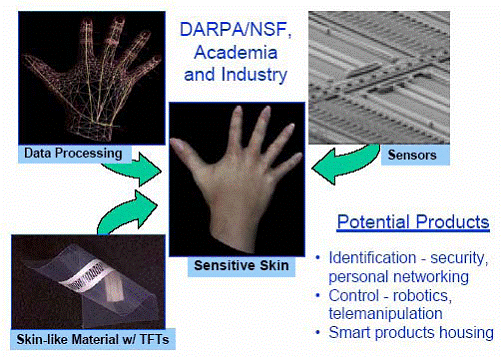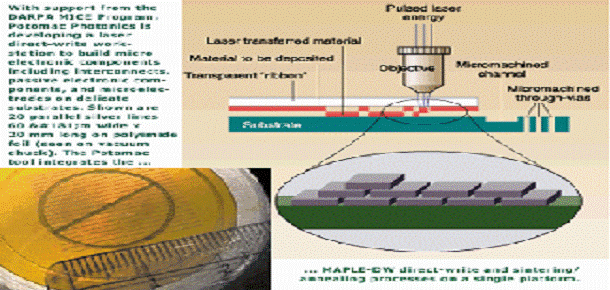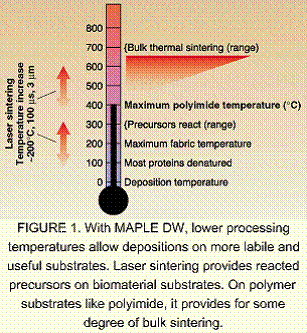





Published on Apr 02, 2024
Sensitive skin is a large-area, flexible array of sensors with data processing capabilities, which can be used to cover the entire surface of a machine or even a part of a human body. Depending on the skin electronics, it endows its carrier with an ability to sense its surroundings via the skin's proximity, touch, pressure, temperature, chemical/biological, or other sensors. Sensitive skin devices will make possible the use of unsupervised machines operating in unstructured, unpredictable surroundings among people, among many obstacles, outdoors on a crowded street, undersea, or on faraway planets.
Sensitive skin will make machines "cautious" and thus friendly to their environment.
This will allow us to build machine helpers for the disabled and elderly, bring sensing to human prosthetics, and widen the scale of machines' use in service industry. With their ability to produce and process massive data flow, sensitive skin devices will make yet another advance in the information revolution. This paper surveys the state of the art and research issues that need to be resolved in order to make sensitive skin a reality.

- Sensitive Skin material will hold embedded sensors and related signal processing hardware. It needs to be flexible enough for attaching it to the outer surfaces of machines with moving parts and flexible joints. - The skin must stretch, shrink, and wrinkle the way human skin does, or to have other compensating features. Otherwise, some machine parts may become "exposed" due to the machine's moving parts, and have no associated sensing.
- Wiring must keep its integrity when Sensitive Skin is stretched or wrinkled. This requirement calls for novel wire materials, e.g. conductive elastomers or vessels carrying conductive liquid, or novel ways of wire design with traditional materials, such as helical, stretchable wires
From the device point one might wish a Sensitive Skin to have some of the following capabilities:
. Flexible or deformable, Can be tiled or cut, This aspect ties in to cost and repair ability, High detectivity, On-skin switching and signal processing, Fault tolerances by distributing functions/computing, or protect processor units. Transmission by wire or optical fiber, or wireless: RF, UHF, free-space optical.
. Power by wire photovoltaics, RF, fuel cells, micro engines, or from energy harvesting - (skin-integrated mechanical power generators). Power storage in batteries. Or as fuel for fuel cells and micro engines.
. Sensitive Skin sensor components will be deployed in two dimensional arrays of sufficiently high density
. Smaller arrays may be of use as well: the key feature is that the skin should allow, by itself or with appropriate data processing, to identify with reasonable accuracy the points of the machine's body where the corresponding sensor readings take place.
. "Self-sensing" ability of the skin is highly desirable; this may include sensing of contamination, dust, chemical substances, temperature, radiation, as well as detection of failure of individual or multiple skin sensors and the ability to work around failed areas.
. The ability to measure distance to objects would be a great advantage for enabling dexterous motion of the machine that carries the skin
The materials needed for the printing of sensor circuits include metallic conductors, insulators, semiconductors for transistors and light emitters, piezoelectric materials, etc. This approach to the printing of active circuits explores the territory that lies between IC's and printed-wire boards. In effect, sensitive skin devices will contain active circuits monolithically integrated with their packaging. Completed thin-film circuits are at most a few micrometers thick. Therefore, the substrate and encapsulation constitute the bulk of the finished product. Reduction of their weight and thickness becomes important.
When the substrate is reduced to a thickness where it becomes flexible, it also becomes usable in continuous, roll-to-roll paper-like production. The finished circuit then is a flexible foil, and using equally thin encapsulation will preserve this flexibility. Rugged thin-film circuits are a natural consequence of the mechanics of thin foil substrates. In devising printing techniques for fabricating sensitive skin, the questions of feature size and of overlay registration must be answered. The development of microelectronics has shown that the search for high pattern density is one of the main drivers of IC technology. Therefore, it is instructive to estimate the density of active devices that could be produced by using conventional printing techniques.
The physical limits of several printing techniques are considerably finer than the resolution and registration of conventional printing equipment. Laser writing can produce a resolution of the order of 1 micro meter. Nanoimprinting has demonstrated a resolution in the tens of nanometer range. The density of directly printed devices can be raised orders of magnitude above ~ 10000 per square centimeter.+
In order to fabricate novel devices that incorporate ink jet printed organic light emitting diodes and integrated active circuits based on printed organic logic components, it is highly desirable that all the other circuit components and connections can be printed with a compatible technology. These components and connections can include resistors, capacitors, diodes, inductors, sensors, transducers, and interconnects. Because the material properties and the material patterns are optimized best when done in separate steps, the application or modification of active material in IC fabrication is separated from its patterning. To directly print active circuits, one must devise materials that can be applied and patterned in a single step.

Figure-12. Direct patterning deposition Non-contact printing Minimum material
The printing process deposits aerosolized liquid particles as small as 20 nanometers in diameter using aerodynamic focusing. The droplet / particle beam can currently be focused down to a 25-micron diameter. Approximately one billion particles per second can be deposited, with accuracies on the order of 25 microns. Once the materials are deposited, they are usually post-treated to achieve densification and chemical decomposition to produce desired electrical and mechanical properties. This can be done either thermally or by a laser processing step depending upon the deposition material and substrate combination being used. A wide variety of other conductor materials have been formulated into inks that can be jetted and decompose cleanly into pure metal at low temperatures.
Superior MicroPowders has developed innovative inks, which build on its expertise in advanced particle technology and the development of suitable molecular precursors that can be converted to functional components. A typical ink consists of particles, a molecular precursor to the functional phase, vehicle, binder, and additives. Both mixtures of molecular precursors with and without particles can be formulated for inks. Particles can be micro– or nano–sized particles.
In the electronics industry, the trend toward miniaturization of both components and subsystems has largely overlooked mesoscale passive devices (~10 μm to 1 mm in size), mostly because of difficulties with their fabrication and performance. This is changing as the continuous drive for new electronic and sensor devices pushes current technologies to their limits. New processes are required to increase the density and reduce the size of mesoscale passive devices, while at the same time simplifying their manufacturing and accelerating their prototyping times.
To build mesoscale patterns and arrays on even the most delicate structures, engineers combine a standard laser-writing technique—laser-induced forward transfer—with the vacuum-based MAPLE process. Material deposition begins when the beam of a high-repetition-rate, 355-nm ultraviolet (UV) laser is focused through a transparent support onto a 1- to 10-μm matrix-based coating on its opposite side (see figure-13). The coating transfers to the receiving substrate and, with some thermal processing, forms an adherent film with electronic properties comparable to devices fabricated by typical thick-film approaches such as screen printing.

Figure-13(a) Laser direct writing

Figure-13. Laser direct writing (Fig 13)
The technique forms electronic circuit patterns with feature resolution smaller than 10 μm by synchronously moving the ribbon to a fresh, unexposed region and then moving the receiving substrate approximately one beam diameter. The resulting individual mesoscopic bricks of electronic material, one per laser shot, are then assembled into the desired pattern. A rapid ribbon change from a metal to a dielectric and back to a metal allows building parallel-plate capacitors or other three-dimensional (3-D) structures.
When the ribbon is removed, the MAPLE DW system has all the attributes of a laser micromachining system. Thus, engineers can etch grooves or vias in the substrate, preclean the surface, or even surface anneal or etch individual components to improve their performance or dimensional accuracy. MAPLE DW represents a paradigm shift for conventional electronic manufacturing and prototyping processes. The ability to generate components on demand any place on any substrate in a matter of minutes, instead of weeks, will provide engineers with a unique opportunity to bring new designs to life that are infeasible with today's manufacturing techniques.
One of the most important characteristics of any sensitive skin system architecture should be the carefully planned incorporation of fault detection and tolerance. Faults are likely to occur in these systems from a number of different sources:
��Sensor failure due to manufacturing defects or field conditions.
��Network failure due to skin punctures, seams, or environmental noise.
��Processor failure due to environmental stress.
While some of these failures are likely to be permanent and some transient, the overall system must be designed from the start to be fault tolerant. This observation has significant implications on the design of the entire system. Signal processing algorithms must be able to process data from an irregular array. This requirement already exists for flexible surfaces where spatial location can vary over time, even relative spacing on the surface.
The benefit of such a scheme is that the resulting structure remains regular, allowing the main algorithm to be unmodified. These approaches can introduce significant latency in response time, which could be a limiting factor in the face of transient faults. Network algorithms must be highly adaptive in order to route around congestion points and failed links.
The best performing algorithm naturally depends on the rate and characteristics of faults, though it is likely that a hybrid approach that incorporates multiple models will need to be developed. Higher-order functions, such as analysis and control applications, will also benefit from a hybrid and hierarchical structure that naturally presents multiple views of the system state and allows an overarching controller to select from the most reliable view.
History strongly suggests that these properties must be designed into each level of the system from the very beginning. Fault-tolerance is much like security in a computer system, and past attempts to address failure modes late in the design process have almost always failed to produce acceptable results.
Wearable sensor skins have started to appear in preliminary forms such as the Data Glove, which measures finger joint positions for human-computer interface (HCI). These wearable skins for HCI can be expanded to include body suits which not only measure joint angles, but could also measure and apply contact pressures, to give people a much higher dimensional and more natural interaction with computers. Obvious HCI applications are in training, education, and entertainment.
In the biomedical area, wearable sensitive skins can be used to restore sensory capability to people who have lost fine sensation in extremities (such as diabetics), or to people with spinal cord injuries. A relatively simple sensitive skin garment could be used to prevent pressure sores in bedridden or wheel chair bound people. A wearable sensitive skin would also be useful for overall physiological monitoring, such as frostbite detection. If the wearable sensitive skin can also include even a simple actuation capability, a very wide range of further biomedical applications becomes promising. For example simple distributed actuators could be used in applications such as thermoregulation, functional neuromuscular stimulation, smart compression for lymphatic system drainage, or controllable damping/stiffness for tremor reduction. Of course, the sensitive skin is not limited to the strain, vibration, and temperature senses of human skin. Proximity sensing would be a useful capability for the visually impaired. For military applications, sensors for laser, radar, chemicals, or puncture would be quite valuable.
By 2010, the "dream soldier will have sensors built into a skintight uniform." After 10 years, every piece of clothing will include some electronics,"

Figure-15
If machines are to work nimbly in cluttered environments or with humans, they need sensitive skins with proximity and contact sensors. These sensors would provide information so the machines could protect both themselves and people they work with. For human-computer interaction, robot companions could respond appropriately to human touch. Moving vehicles could have an intelligent skin, which allows easier navigation in tight spaces, for example maneuvering automobiles on crowded streets.

Even fixed structures as simple as floors and walls could have improved functionality using a low-cost sensitive skin. For example, a floor with distributed pressure sensors could be used for tracking, or a safety measure to warn of slippery spots or report falls. In civil engineering, skins for buildings and bridges can warn of fatigue or impending failure. For human computer interaction, surfaces could respond to gestures and infer intent, such as changing a lighting level.
There is overlap between applications of passive sensitive skin and the whole area of active surfaces such as drag reduction in aero- and hydrodynamics. For example, active surface furniture such as chairs could increase comfort for people sitting for long periods of time. Active sensitive skin on walls could be used for sound and vibration canceling.
Sensitive skin is a large array of sensors embedded in a flexible, stretchable, and/or foldable substrate that might cover the surface of a moving machine. By endowing these machines with ability to sense their surroundings, sensitive skin will make it possible to have unsupervised machinery in unstructured, unpredictable surroundings. Sensitive skin will make the machines “cautious” and thus friendly to their environment. With these properties, sensitive skin will revolutionize important areas of service industry, make crucial contributions to human prosthetics, and augment human sensing when fashioned into clothing.
Being transducers that produce and process information, sensitive skin devices will be generating and processing data flows in real time on a massive scale, which will lead to yet another leap in the information revolution. Sensitive skin presents a new paradigm in sensing and control. It is an enabling technology with far reaching applications, from medicine and biology to industry and defense. The state of the art in the areas that are basic to development of the skin technology shows that highly efficient devices should be feasible, meaning by this high density of sensors on the skin, and hierarchical and highly distributed real time sensor data processing.
All this non withstanding the fact that the existing prototypes are clumsy, have low resolution, accuracy and reliability, and are not yet ready for commercialization. Serious research issues elaborated in this paper have to be resolved before sensitive skins can become a ubiquitous presence in our society. We hope the readers will view this paper as our first effort to map out the new territory, and as an invitation to join in the exploration.
| Are you interested in this topic.Then mail to us immediately to get the full report.
email :- contactv2@gmail.com |